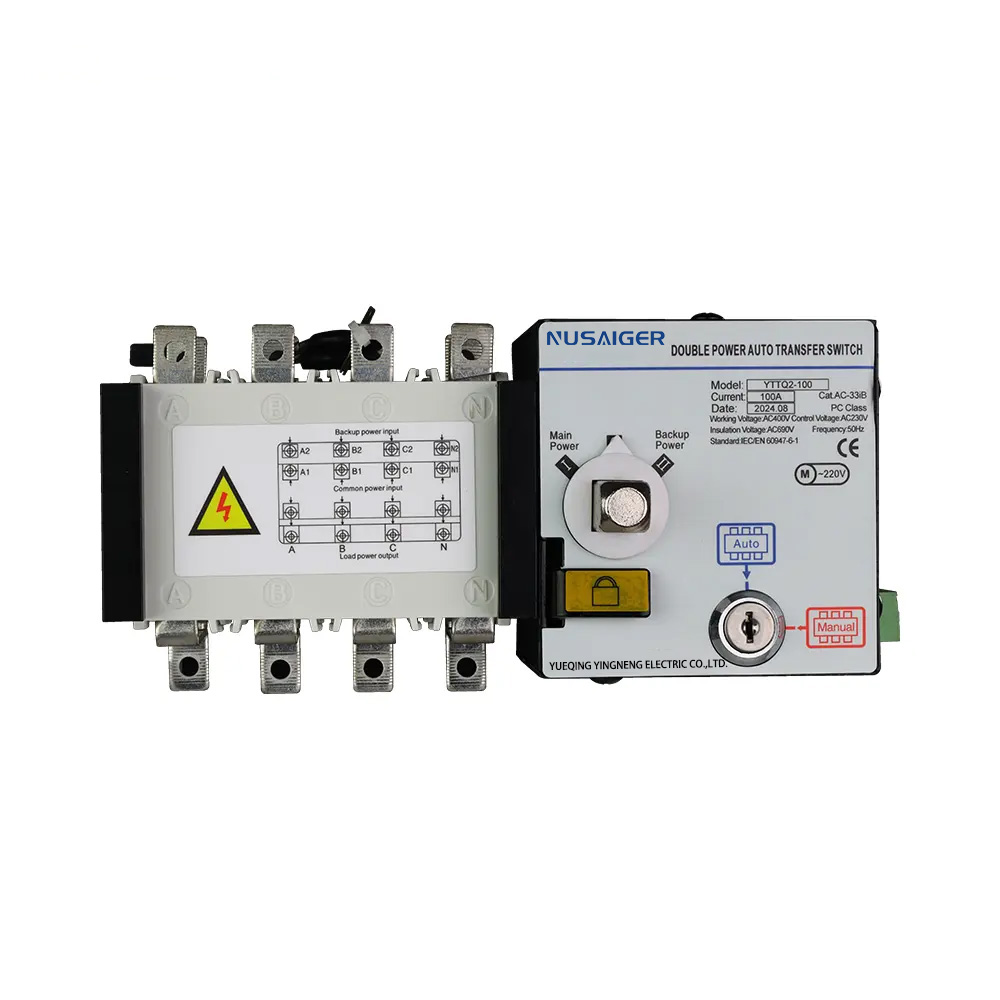Installation and Wiring of Dual Power ATS: Best Practices and Common Mistakes
A dual power automatic transfer switch (ATS) is essential for ensuring continuous power supply by switching between main and backup sources. However, improper installation or wiring can lead to malfunction, safety hazards, or even equipment damage. This article provides a comprehensive guide on how to install and wire an ATS, including best practices and the most common mistakes to avoid.
1. Pre-Installation Preparation
Before beginning the installation process, proper preparation is necessary:
- Review Technical Specifications: Check the ATS datasheet for rated current, voltage, frequency, and wiring diagram.
- Identify Power Sources: Determine the main supply and backup supply (e.g., generator or secondary grid).
- Plan the Load Distribution: Decide which loads require dual power support.
- Check Safety Standards: Ensure compliance with local electrical codes (e.g., NEC, IEC, or GB standards).
2. Tools and Equipment Needed
- Insulated screwdrivers and pliers
- Cable cutters and strippers
- Multimeter for voltage and continuity testing
- Cable lugs and crimping tools
- Protective equipment: gloves, goggles, insulated shoes
3. Installation Environment Requirements
The installation location greatly affects ATS performance and lifespan:
- Ventilation: Ensure adequate airflow to avoid overheating.
- Humidity Control: Keep away from damp areas to prevent corrosion.
- Accessibility: Install in an accessible area for easy maintenance.
- Protection: Use enclosures with appropriate IP rating for outdoor or dusty environments.
4. Wiring Steps for a Dual Power ATS
The general wiring process involves connecting both power sources and the load to the ATS:
- Disconnect Power: Ensure all power sources are turned off before wiring.
- Connect Main Power Input: Connect the main supply lines to the designated ATS terminals.
- Connect Backup Power Input: Connect the generator or secondary source to the backup input terminals.
- Connect Output Load: Wire the ATS output terminals to the load distribution system.
- Control Wiring: Connect generator start signal (if applicable) and monitoring circuits.
- Grounding: Ensure proper grounding for safety and fault protection.
5. Best Practices During Installation
- Follow Manufacturer Guidelines: Always refer to the wiring diagram provided by the ATS manufacturer.
- Use Correct Cable Size: Select wires rated for the ATS current capacity to prevent overheating.
- Torque Settings: Tighten terminals according to recommended torque values to avoid loose connections.
- Labeling: Clearly label all connections for easier maintenance and troubleshooting.
- Testing: Perform continuity checks before energizing the system.
6. Common Mistakes to Avoid
- Undersized Wiring: Using cables smaller than required can lead to overheating or fire hazards.
- Loose Connections: Poorly tightened terminals may cause arcing and contact damage.
- Ignoring Grounding: Failure to properly ground the system can cause electrical shocks.
- Bypassing Protective Devices: Skipping fuses or breakers reduces system safety.
- Wrong Phase Sequence: Incorrect wiring of three-phase systems can damage motors and equipment.
7. Safety Precautions
- Always turn off both power sources before starting installation.
- Use lockout/tagout (LOTO) procedures to prevent accidental energization.
- Test for absence of voltage with a multimeter before touching conductors.
- Wear appropriate PPE (Personal Protective Equipment).
- Only qualified electricians should perform ATS installation.
8. Testing After Installation
Once wiring is complete, thorough testing is required:
- No-Load Test: Verify switching between power sources without load.
- Load Test: Run the system under actual load conditions to confirm performance.
- Automatic Transfer Test: Simulate a power failure to ensure ATS transfers as expected.
- Generator Start Test: Check automatic start signal if the ATS controls generator startup.
9. Maintenance After Installation
Routine inspection and maintenance are necessary for long-term reliability:
- Inspect connections and retighten if needed.
- Clean dust and debris from ATS enclosure.
- Perform periodic functional testing.
- Replace worn contacts or relays promptly.
10. Conclusion
Proper installation and wiring of a dual power automatic transfer switch are critical for ensuring safety, reliability, and uninterrupted power supply. Following best practices, avoiding common mistakes, and conducting thorough testing will help maximize the performance and lifespan of your ATS system. Always prioritize safety and consult a licensed professional for installation tasks.



